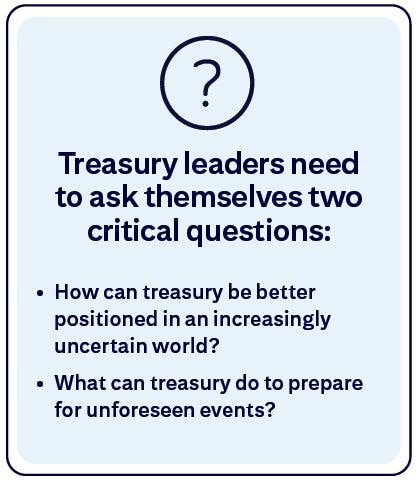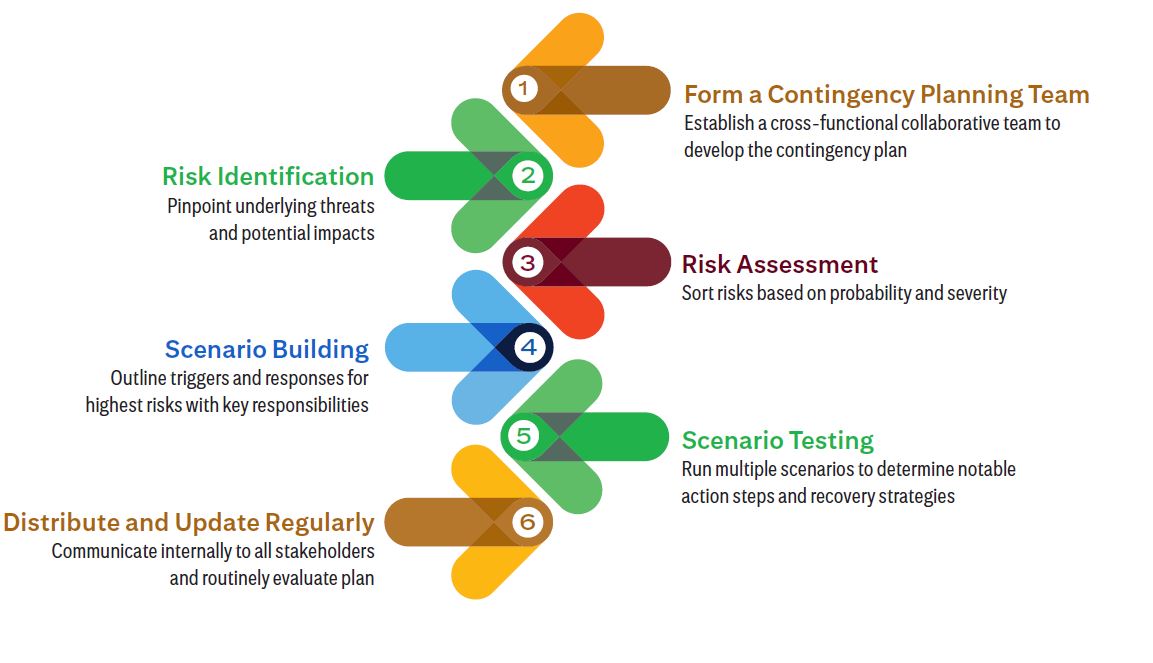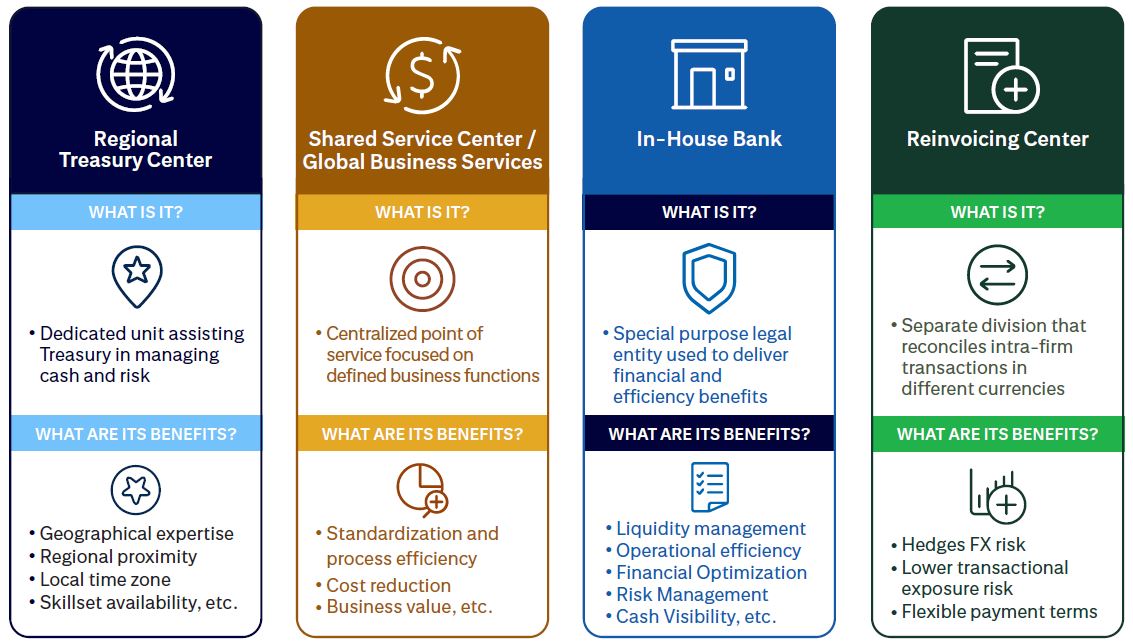Global Crisis Preparedness: Managing Treasury in an Uncertain World

Global landscape of risks facing multinational corporations

Global crisis preparedness: So, what can treasury do?
In order to mitigate potential risks, there are three steps treasury can take to help reduce risk and ensure their organization is well-positioned to react to adverse situations. The following is a roadmap of best practice observations based on what some of the leading companies have done.
1. Contingency planning


- Legal, regulatory and governance framework
- Trading environment
- Taxation considerations
- Financial markets
- Innovation ecosystems
- Availability of talent
- Quality of infrastructure
- Proximity of important markets to the business
- Country’s technological readiness
- Financial market development
- Infrastructure
- Macroeconomic environment
- Currency convertibility
- Tax implications
- Financial market depth
- Access to people
- Access to foreign exchange markets
- Time zones
- Regions treasury may need to support
- Holding minimum liquidity in different countries to minimize trapped cash
These materials are provided for informational purposes only and are intended for institutional clients and not as a solicitation by Citi for any products or services. The materials may include market commentary, views and/or opinions of the Citi Treasury and Trade Solutions Client Advisory, based on reasonable analysis of information available to the group. Although the content herein is believed to be reliable, these materials and the information herein do not constitute legal, accounting, tax, or investment advice and Citi makes no representation or warranty whatsoever as to the accuracy or completeness of any information contained herein or otherwise provided.